
ANATOMY+PHYSIOLOGY-CONNECT ACCESS CARD
3rd Edition
ISBN: 2810021398400
Author: McKinley
Publisher: MCG
expand_more
expand_more
format_list_bulleted
Concept explainers
Question
Chapter 4.6, Problem 27LO
Summary Introduction
To list: The non-membrane-bound organelles of a typical human cell.
Introduction: Membrane is the outer selective barrier that separates the internal component of the cells or organelles from their surroundings.
Expert Solution & Answer
Want to see the full answer?
Check out a sample textbook solution
Students have asked these similar questions
Day 3-A: Venn Diagram
Directions: Using the Venn diagram, describe a pure substance using the properties of elements and
compounds. Write only the letters corresponding to your responses.
PURE SUBSTANCE
ELEMENTS
COMPOUNDS
A. It is the simplest form of matter..
B. It cannot be separated into simpler components by chemical means.
C. It is made by two or more elements combined.
D. It serves as the building block of other substances.
E. Examples are oxygen, hydrogen, carbon, and gold.
F. It can be separated into simpler substances by chemical means.
G. It is represented by a chemical formula.
H. Examples are water, sugar, salt, and baking soda.
3
Describe in details the two molecular processes in steroid and peptide action
Can you choose one topic of interest associated with microbiology, human diseases and / or human health.
Chapter 4 Solutions
ANATOMY+PHYSIOLOGY-CONNECT ACCESS CARD
Ch. 4.1 - Prob. 1LOCh. 4.1 - What is the advantage of using a TEM instead of an...Ch. 4.1 - Prob. 2LOCh. 4.1 - Prob. 3LOCh. 4.1 - Prob. 2WDLCh. 4.1 - Prob. 4LOCh. 4.1 - Prob. 5LOCh. 4.1 - Prob. 6LOCh. 4.1 - Prob. 7LOCh. 4.1 - What are the three main structural features of a...
Ch. 4.1 - What cellular structure is responsible for forming...Ch. 4.2 - Prob. 8LOCh. 4.2 - How do lipids maintain the basic physical barrier...Ch. 4.2 - Prob. 9LOCh. 4.2 - Prob. 10LOCh. 4.2 - What type of plasma membrane protein provides the...Ch. 4.3 - Prob. 11LOCh. 4.3 - Prob. 12LOCh. 4.3 - How does O2 diffuse into a cell and CO2 diffuse...Ch. 4.3 - Prob. 8WDLCh. 4.3 - Prob. 13LOCh. 4.3 - LEARNING OBJECTIVE
14. Define osmotic pressure.
Ch. 4.3 - Prob. 15LOCh. 4.3 - WHAT DO YOU THINK?
1 Which setup would exhibit...Ch. 4.3 - Define osmosis.Ch. 4.3 - What occurs to the tonicity of a cell when it is...Ch. 4.3 - What general conclusion can you make concerning...Ch. 4.3 - Prob. 16LOCh. 4.3 - Prob. 17LOCh. 4.3 - Prob. 18LOCh. 4.3 - What transport process involved in the movement of...Ch. 4.3 - Engulfing of a bacterium by a white blood cell...Ch. 4.4 - Prob. 19LOCh. 4.4 - Prob. 20LOCh. 4.4 - Define a resting membrane potential.Ch. 4.4 - LEARNING OBJECTIVE
21. Explain the role of both...Ch. 4.4 - Prob. 22LOCh. 4.4 - Explain how the resting membrane potential is...Ch. 4.4 - Prob. 23LOCh. 4.5 - What are some examples of how cells communicate...Ch. 4.5 - Prob. 24LOCh. 4.5 - How do action of enzymatic receptors and G...Ch. 4.6 - Prob. 25LOCh. 4.6 - Prob. 26LOCh. 4.6 - Prob. 2WDTCh. 4.6 - Describe the general structure of both the...Ch. 4.6 - Prob. 19WDLCh. 4.6 - Prob. 27LOCh. 4.6 - Prob. 28LOCh. 4.6 - Which non-membrane-bound organelle functions (a)...Ch. 4.6 - Prob. 29LOCh. 4.6 - Prob. 30LOCh. 4.6 - Which cellular surface structure functions in (a)...Ch. 4.6 - Prob. 31LOCh. 4.6 - Which cellular junction (a) provides resistance to...Ch. 4.7 - Prob. 32LOCh. 4.7 - Prob. 33LOCh. 4.7 - What is the function of nuclear pores within the...Ch. 4.7 - What is the function of the nucleolus?Ch. 4.7 - Prob. 34LOCh. 4.7 - Describe the structural relationship of DNA and...Ch. 4.8 - Prob. 35LOCh. 4.8 - Prob. 36LOCh. 4.8 - What are the three major structures required for...Ch. 4.8 - Prob. 37LOCh. 4.8 - Prob. 38LOCh. 4.8 - Prob. 39LOCh. 4.8 - Prob. 3WDTCh. 4.8 - What is a codon and an anticodon?Ch. 4.8 - How is mRNA attached to ribosomes and translated...Ch. 4.8 - Prob. 40LOCh. 4.8 - Prob. 29WDLCh. 4.9 - LEARNING OBJECTIVE
41. Explain the structure and...Ch. 4.9 - Prob. 42LOCh. 4.9 - How is chromatin distinguished from a chromosome?Ch. 4.9 - Prob. 43LOCh. 4.9 - Prob. 44LOCh. 4.9 - Prob. 45LOCh. 4.9 - Prob. 4WDTCh. 4.9 - Describe the process of DNA replication that...Ch. 4.9 - What are the events that occur during the mitotic...Ch. 4.10 - Prob. 46LOCh. 4.10 - Prob. 47LOCh. 4.10 - What are the specific changes that occur to DNA...Ch. 4 - All of the following general functions are carried...Ch. 4 - _____ 2. The molecule that is responsible for most...Ch. 4 - Do You Know the Basics?
3. Which process does not...Ch. 4 - Prob. 4DYBCh. 4 - Prob. 5DYBCh. 4 - Prob. 6DYBCh. 4 - Prob. 7DYBCh. 4 - Prob. 8DYBCh. 4 - _____ 9. During this stage of mitosis, the...Ch. 4 - _____ 10. Erythrocytes do not have a nucleus. In...Ch. 4 - Prob. 11DYBCh. 4 - Prob. 12DYBCh. 4 - Describe the passive processes of membrane...Ch. 4 - Describe the active processes of membrane...Ch. 4 - List the membrane-bound structures, and describe...Ch. 4 - Prob. 16DYBCh. 4 - Prob. 17DYBCh. 4 - Prob. 18DYBCh. 4 - Prob. 19DYBCh. 4 - Explain the processes that occur in the different...Ch. 4 - Michael was born with Tay-Sachs disease. Which of...Ch. 4 - Prob. 2CALCh. 4 - Prob. 3CALCh. 4 - Prob. 4CALCh. 4 - Prob. 5CALCh. 4 - Prob. 1CSLCh. 4 - Prob. 2CSLCh. 4 - Prob. 3CSL
Knowledge Booster
Learn more about
Need a deep-dive on the concept behind this application? Look no further. Learn more about this topic, biology and related others by exploring similar questions and additional content below.Similar questions
- Can you solve number 9 and explain each one? (especially d - inversion)arrow_forwardwhich is a non-mendelian traitarrow_forwardJaved Help Save & Exit Submit 1 B.33 bints eBook References 10 Check my work Using the coding techniques you have learned, carefully read through the case study and determine the most accurate diagnosis code(s). Remember, check the chapter- specific, subchapter-specific, and category-specific notations within the Tabular List. Then, determine the most accurate procedure code(s) along with any modifier(s), if appropriate. FRAISER, HARROLD & YAWZI, Neurology 81 BAYER BOULEVARD SENSATION, FL 32811.407-555-5852 PATIENT: SAMI, KAREN ACCOUNT/EHR #: SAMIKA001 The patient is a 29-year-old female with a history of recurrent sinus infections who was well until 6 days ago. She presents with fever, severe frontal headache, facial pain, and runny nose. Patient states she has been having difficulty concentrating. I last saw this patient 6 months ago for sinusitis. Weight 145 lb. B/P 120/85 T 101.5° HEENT: Tenderness over frontal and left maxillary sinuses. Nasal congestions visible. CT scan reveals…arrow_forward
- During United Nations health mission trip to Somalia, several children were found to have edema in lower limbs, feet, face, and hands. Upon pressing their hand with the thumb, the imprint lasted for a while. This condition is typically known as- Group of answer choices diabetes kwashiorkor marasmus dehydrationarrow_forwardThe way that gynoid obesity differs from android obesity is that- Group of answer choices there is no metabolic syndrome in both android obesity is associated with metabolic syndrome whereas gynoid obesity is not gynoid obesity is associated with metabolic syndrome whereas android obesity is not gynoid obesity is type 2 diabetes whereas android obesity is type 1 diabetesarrow_forwardExplain the viral structure (capsid, genetic material, envelope, etc) and what macromolecules (proteins, nucleic acids, lipids) are involved. Use visuals or metaphors. Add pictures and the website linkarrow_forward
- Explain how the virus enters cells (e.g., receptor binding, membrane fusion or endocytosis), why it targets the membrane, and what happens afterward. Add pictures and website linkarrow_forwardDental Identification Where dental comparison is utilized for identification, when can we say that an individual is a definite "exclusion?" When can we call it a "match?"arrow_forwardName two advantages of using intramuscular EMG electrodes compared to traditional surface EMG electrodesarrow_forward
arrow_back_ios
SEE MORE QUESTIONS
arrow_forward_ios
Recommended textbooks for you
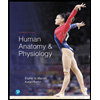 Human Anatomy & Physiology (11th Edition)BiologyISBN:9780134580999Author:Elaine N. Marieb, Katja N. HoehnPublisher:PEARSON
Human Anatomy & Physiology (11th Edition)BiologyISBN:9780134580999Author:Elaine N. Marieb, Katja N. HoehnPublisher:PEARSON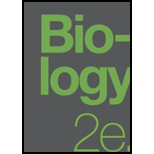 Biology 2eBiologyISBN:9781947172517Author:Matthew Douglas, Jung Choi, Mary Ann ClarkPublisher:OpenStax
Biology 2eBiologyISBN:9781947172517Author:Matthew Douglas, Jung Choi, Mary Ann ClarkPublisher:OpenStax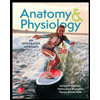 Anatomy & PhysiologyBiologyISBN:9781259398629Author:McKinley, Michael P., O'loughlin, Valerie Dean, Bidle, Theresa StouterPublisher:Mcgraw Hill Education,
Anatomy & PhysiologyBiologyISBN:9781259398629Author:McKinley, Michael P., O'loughlin, Valerie Dean, Bidle, Theresa StouterPublisher:Mcgraw Hill Education,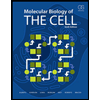 Molecular Biology of the Cell (Sixth Edition)BiologyISBN:9780815344322Author:Bruce Alberts, Alexander D. Johnson, Julian Lewis, David Morgan, Martin Raff, Keith Roberts, Peter WalterPublisher:W. W. Norton & Company
Molecular Biology of the Cell (Sixth Edition)BiologyISBN:9780815344322Author:Bruce Alberts, Alexander D. Johnson, Julian Lewis, David Morgan, Martin Raff, Keith Roberts, Peter WalterPublisher:W. W. Norton & Company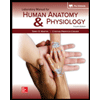 Laboratory Manual For Human Anatomy & PhysiologyBiologyISBN:9781260159363Author:Martin, Terry R., Prentice-craver, CynthiaPublisher:McGraw-Hill Publishing Co.
Laboratory Manual For Human Anatomy & PhysiologyBiologyISBN:9781260159363Author:Martin, Terry R., Prentice-craver, CynthiaPublisher:McGraw-Hill Publishing Co.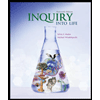 Inquiry Into Life (16th Edition)BiologyISBN:9781260231700Author:Sylvia S. Mader, Michael WindelspechtPublisher:McGraw Hill Education
Inquiry Into Life (16th Edition)BiologyISBN:9781260231700Author:Sylvia S. Mader, Michael WindelspechtPublisher:McGraw Hill Education

Human Anatomy & Physiology (11th Edition)
Biology
ISBN:9780134580999
Author:Elaine N. Marieb, Katja N. Hoehn
Publisher:PEARSON

Biology 2e
Biology
ISBN:9781947172517
Author:Matthew Douglas, Jung Choi, Mary Ann Clark
Publisher:OpenStax

Anatomy & Physiology
Biology
ISBN:9781259398629
Author:McKinley, Michael P., O'loughlin, Valerie Dean, Bidle, Theresa Stouter
Publisher:Mcgraw Hill Education,

Molecular Biology of the Cell (Sixth Edition)
Biology
ISBN:9780815344322
Author:Bruce Alberts, Alexander D. Johnson, Julian Lewis, David Morgan, Martin Raff, Keith Roberts, Peter Walter
Publisher:W. W. Norton & Company

Laboratory Manual For Human Anatomy & Physiology
Biology
ISBN:9781260159363
Author:Martin, Terry R., Prentice-craver, Cynthia
Publisher:McGraw-Hill Publishing Co.

Inquiry Into Life (16th Edition)
Biology
ISBN:9781260231700
Author:Sylvia S. Mader, Michael Windelspecht
Publisher:McGraw Hill Education
Biology - Intro to Cell Structure - Quick Review!; Author: The Organic Chemistry Tutor;https://www.youtube.com/watch?v=vwAJ8ByQH2U;License: Standard youtube license